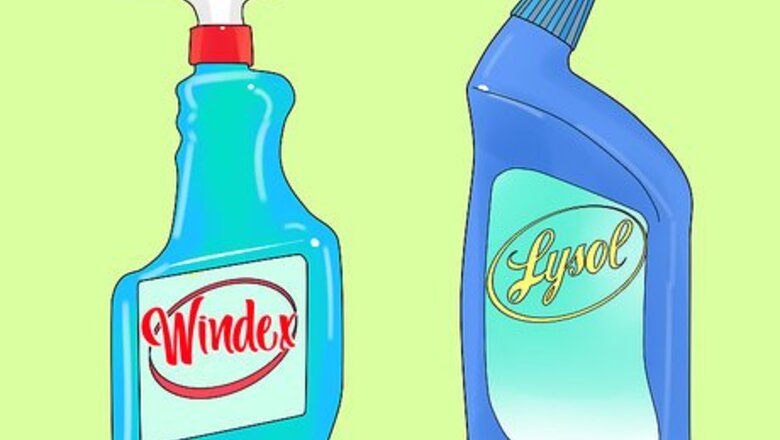
views
Getting Rid of the Grime
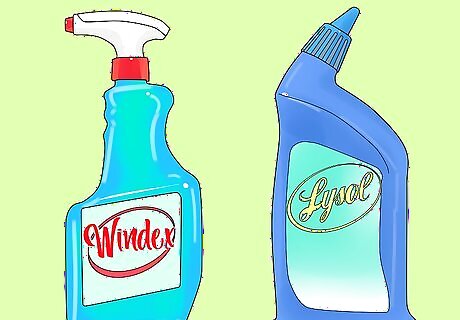
Use a commercial cleaner. Many cleaning products are easily available in both sprays and gels. From all-purpose cleaners to specific solvents for glass and tile, they loosen the scum chemically, and allow you to wipe it away. Windex and Lysol, among others, are easily available at most grocery and drugstores. Apply a small amount to your surface, enough that you can start to see it working in a small area, wait about fifteen minutes, and scrub. Repeat as necessary to clean your entire surface, and finish the job by wiping it dry.
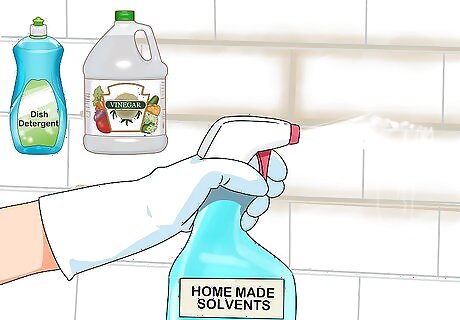
Customize your solvents for a do-it-yourself cleaning experience. Home-made solvents can save you a bundle, and you can adjust the quantities and mixtures on your own. Spray or sponge on, let them break down the grime, scrub, rinse with warm water, and make sure to dry thoroughly. For bronze, brass and ceramic tile, use mostly water with just a little vinegar. In most cases you can scrub almost immediately. For tougher jobs, add 1/4 cup distilled white vinegar to a cup of baking soda, and let it form into a paste. Apply this with a sponge and wait about 15-30 minutes before scrubbing clean. You can also make a spray from equal parts water and vinegar, and add a tablespoon of dishwashing detergent. Spray your surface, let it work for about 15 minutes, then come in and scrub.
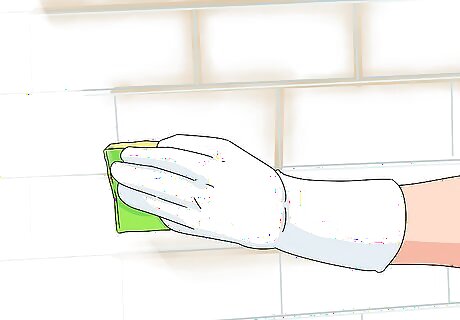
Scrub well with a damp paper towel, cloth, sponge or pumice. Once the chemicals have started to do their work, it's your turn to apply some friction and scrub the scum away. Abrasive surfaces help a lot, but be careful about scratching. Wet cloths and paper towels serve well in a pinch, but they rely a lot on your chemical cleaners. A damp sponge, especially the coarse side, is good for scrubbing away grime. Keep a sharp watch, though, as it will collect a lot of scum to itself. Pumice is extremely effective, but again it will collect the grime. Use a soft brush to clean it out as it gets dirty. Be very careful on tile, as it will scratch, and do not use pumice on fiberglass. Always rinse with water and dry thoroughly.
Preventing the Problem
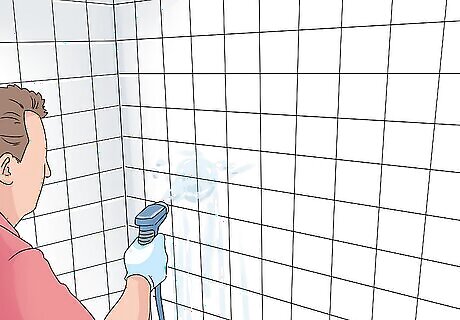
Keep your washing area clean. Any soap you leave behind has the potential to become soap scum. Simply taking better care of your surfaces, day-by-day, can save you from a challenging chore. Rinse out your washing area, and send those extra suds down the drain. Especially for sinks, even a quick once-over with a cloth or paper towel can go a long way toward preventing hardened water as well as soap scum.
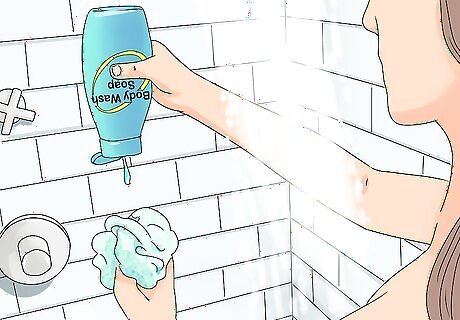
Shower with body wash instead of bar soap. Since fatty acids from bar soap are a leading contributor for scum, simply change the way you wash. No soap, no scum!

Use a daily sink or shower cleaner. As soon as you finish a shower or washing in the sink, a number of commercial cleaners allow you to spray and walk away; others might require a quick wipe. For an easy, home-made daily cleaner, try three parts water and one part vinegar. You can even use a magic eraser to remove soap scum.




















Comments
0 comment